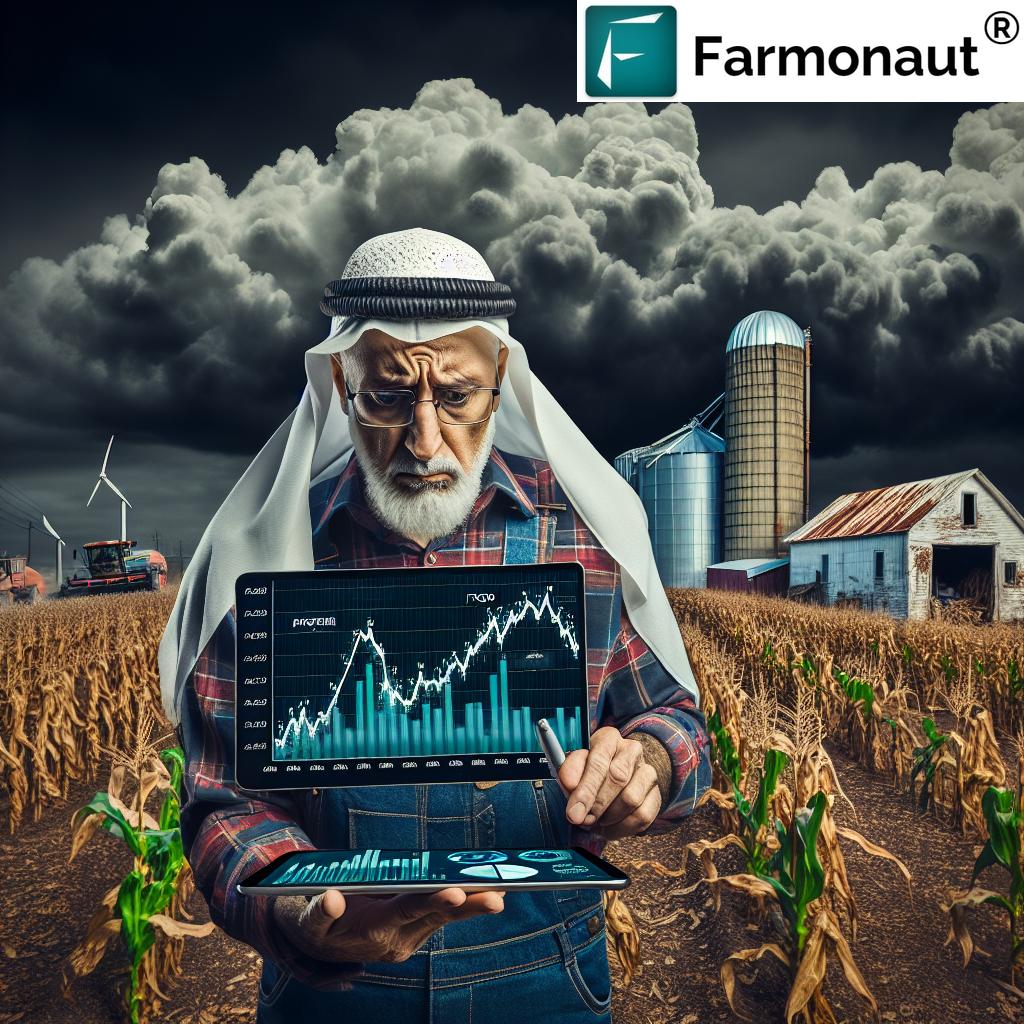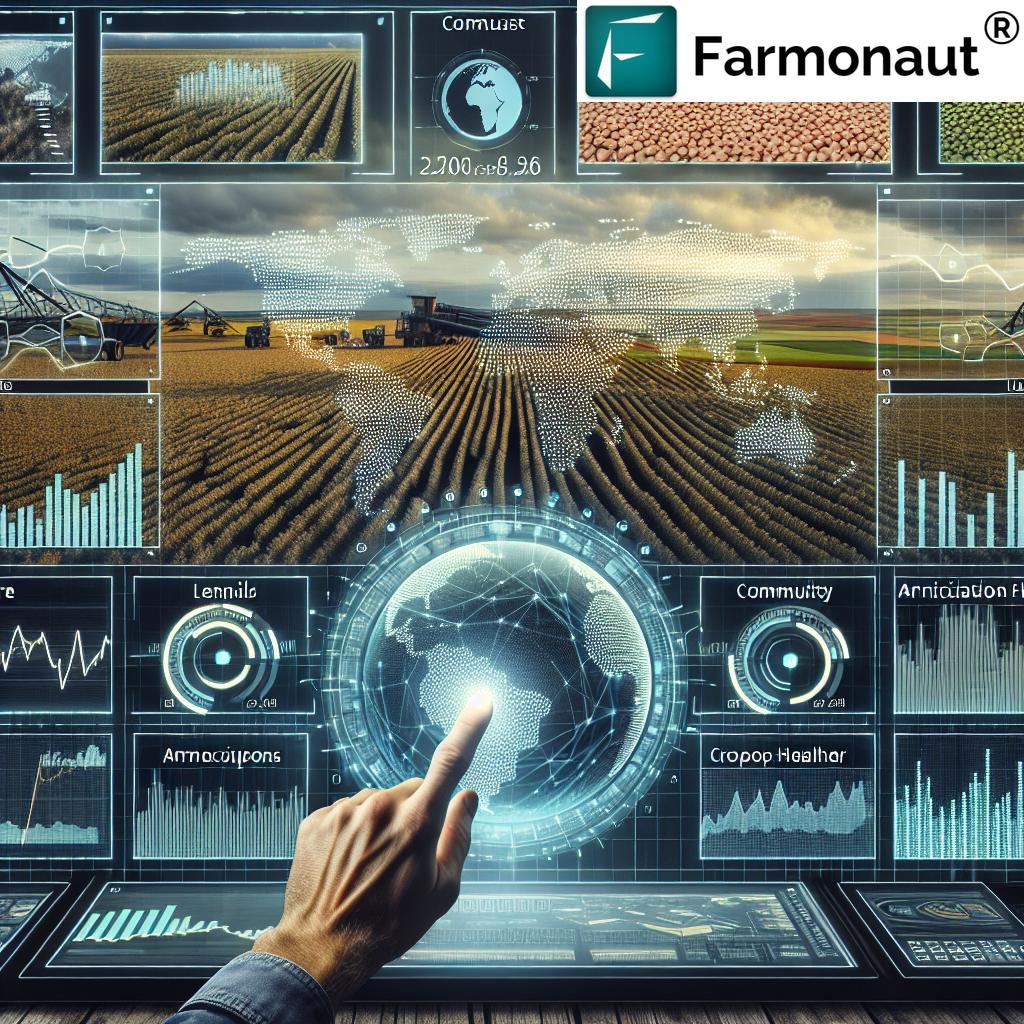Classic Farm Equipment Trade: 2025 FEMA Standards — Industry Trends, Sustainability & Global Agri Productivity
“By 2025, over 60% of classic farm equipment exports must comply with new FEMA sustainability standards worldwide.”
“Global trade in classic farm machinery is projected to increase by 18% as 2025 FEMA regulations reshape agricultural markets.”
Meta description: Discover how classic farm equipment, global trade, and the 2025 FEMA standards are transforming agriculture and sustainability worldwide. In-depth insights on trends, compliance, and market dynamics.
Introduction to Classic Farm Equipment Trade and 2025 FEMA Standards
In 2025, the agricultural sector continues its journey through rapid technological transformation, with automation and precision solutions reshaping farm management. Yet, despite these advancements, classic farm equipment remains an integral component of farming operations worldwide. The enduring presence of vintage tractors, plows, harvesters, and seeders plays a pivotal role, particularly in developing regions and among small to medium-sized farms where reliability, affordability, and adaptability often outweigh the adoption of complex, new machinery.
As the farm equipment trade expands in scope and volume—propelled by growing demand for cost-effective and sustainable farming solutions—regulatory frameworks like the 2025 FEMA (Farm Equipment Manufacturers Association) standards have stepped in to harmonize global markets, enhance safety, and drive environmental compliance. For industry stakeholders, from farmers and technicians to import/export agents and equipment dealers, understanding these dynamics is crucial in optimizing productivity while maintaining sustainability and regulatory adherence.
This comprehensive guide delves into the timeless value of classic farm equipment, explores trade patterns and regulatory shifts shaping their utility and relevance in 2025, and examines emerging opportunities, such as leveraging digital solutions and advanced satellite technologies to ensure optimal farm operations—even when using decades-old machinery.
The Enduring Value of Classic Farm Equipment
Why Classic Farm Equipment Remains a Backbone of Modern Agriculture
Classic farm equipment, particularly machines from the mid-to-late 20th century, are prized for more than just nostalgia. Their robust engineering, mechanical simplicity, and adaptability across various farming conditions have made them enduring assets on farms around the globe.
Key reasons why classic farm equipment remains indispensable in 2025:
- Durability and Longevity: Vintage tractors and implements are engineered for longevity, with heavy-duty frames and durable components that outlast many modern counterparts.
- Ease of Maintenance: Unlike newer equipment which often relies on intricate electronics, classic machines have simpler mechanical systems. This allows farmers—even in remote areas—to perform repairs using basic tools and locally-available parts, without waiting on specialist technicians or proprietary diagnostics.
- Affordability: For small and medium-sized farms and emerging economies, the purchase and operation of classic equipment represents a cost-effective alternative when budgets do not stretch to new machine investments.
- Adaptability: Many classic models, including reputable tractors, plows, and seeders, can be adapted or retrofitted with upgraded engines or alternative fuel options to suit contemporary needs.
- Sustainability: Maintaining and extending the lifecycle of existing machines aligns with sustainable farming practices—reducing manufacturing-related emissions and promoting a circular economy by keeping functional equipment out of landfills.
Classic Farm Equipment: Examples & Their Unique Utility
- Classic Tractors: Models like the Ford 5000 or John Deere 4020 are still widely used for their reliability, adaptability, and ease of modification or part replacement.
- Plows & Harrows: Mechanical tillage tools from the 1960s–1980s continue to be effective due to their sturdy construction and minimal wear points.
- Harvesters & Seeders: Often considered the backbone of harvest season, classic combines and seeders remain in use—especially after being retrofitted with alternative fuel systems or enhanced with basic automation.
Their ongoing utility is not limited to farms in the Americas or Europe; in developing regions across Africa, Southeast Asia, and Latin America, these machines are lifelines that support national food security and rural employment.
Classic Equipment: Engineering and Sustainability Advantages
Robust engineering and minimalism mean classic machines often operate effectively with minimal fuel consumption, especially when compared to heavily computerized new models that may demand higher maintenance and specialized parts. The trend of retrofitting with upgraded engines or integrating alternative fuel options (like biodiesel kits) shows the evolving vision for classic equipment as an enduring component in the quest for sustainable agriculture.
Economic factors also reinforce the relevance of maintaining vintage equipment—given their extended lifecycle and reduced need for frequent replacement.
- Reduced Manufacturing Impact: By continuing to use classic machines, the need to produce new, resource-intensive equipment decreases, helping lower the carbon footprint of the entire agricultural sector.
- Resource Efficiency: Spare parts for classic equipment are still manufactured in many regions, but can often be sourced from already existing units, further minimizing waste.
Classic Farm Equipment Trade: Global Dynamics in 2025
A Vibrant Classic Equipment Market Driven by Changing Needs
The farm equipment trade has evolved dramatically as networks spanning continents facilitate the exchange of classic, used, and refurbished farming machinery. Exporters in North America and Europe supply a mix of completely restored and as-is classic equipment to growing markets in Africa, South America, and Southeast Asia.
- Demand from Developing Regions: Small-scale and family-run farms in these regions prefer the affordable and durable solutions offered by classic machinery, compared to the expense and complexity of the latest models.
- Collectors and Hobbyists: Beyond practical farm use, there’s a lively community of collectors and hobbyists who restore and operate classic tractors and implements for recreational and heritage purposes—driving up demand in specialty markets.
- Online Marketplaces and Dealers: Digital platforms and specialized dealerships streamline international trade by providing verification, refurbished parts, and global shipping logistics tailored for heavy farm equipment.
Key Trade Trends in 2025
- Market Expansion: With an expected 18% increase in classic equipment trade volume globally (as per 2025 projections), the sector remains vibrant.
- Supply Chain Evolution: Skilled technicians and small enterprises continue revitalizing classic tractors, plows, and seeders, enhancing operational lifespan and reliability.
- Support for Rural Employment: The restoration and resale sector not only strengthens classic machinery‘s role, but also stimulates jobs and preserves farm heritage.
The ongoing classic farm equipment trade supports a circular economy, extends machine lifecycles, and facilitates sustainability while delivering tangible market solutions for farmers, manufacturers, and associated businesses.
Digitalization and Its Growing Role
Digital verification (blockchain traceability), remote resource management, and AI-based insights are increasingly employed—especially when importing/exporting classic machines to ensure regulatory compliance and transfer of legitimate assets.
Learn about Farmonaut’s blockchain-based product traceability, supporting transparent equipment ownership and transaction history: Product Traceability for agriculture.
FEMA Farm Equipment Regulation: 2025 Standards & Compliance
The Farm Equipment Manufacturers Association (FEMA) is not a government regulator, but a pivotal association that helps shape and harmonize standards impacting the manufacture, restoration, safety, and global trade of both classic and modern farm equipment. In 2025, FEMA has established fresh regulatory frameworks aimed at:
- Improving operator safety
- Enhancing interoperability of machines and systems
- Controlling emissions and environmental impact
2025 FEMA Farm Equipment Regulatory Highlights
- Operator Safety Mandates: Classic equipment must be retrofitted with safety attachments, such as rollover protection systems (ROPS), compliant lighting, and modern braking systems—with available kits designed for older models.
- Noise & Emissions Control: All exported or newly sold classic machines must meet noise and emission limits; retrofitting is now incentivized, making it economically viable for farmers to adapt to regulatory requirements without replacing entire fleets.
- Digital Certification & Traceability: Transitioning to digital records for compliance, equipment histories, and ownership transfer, making international trade more transparent and secure.
Blockchain-based traceability solutions, as offered by platforms like Farmonaut’s, are at the forefront of this movement. - Regional Harmonization: Standards are being converged across importer and exporter regions, lowering trade barriers and simplifying documentation for classic farm equipment.
Impact of 2025 FEMA Standards on Classic Machines
- Brings older equipment closer to contemporary safety and environmental standards—prolonging their operational relevance without prohibitive upgrades.
- Promotes more robust cross-border compliance, fostering smoother international trade.
- Supports sustainability by incentivizing retrofits and functional upgrades.
For those wishing to ensure their classic tractors and harvesters are 2025-compliant, digital solutions like Farmonaut’s carbon footprint monitoring offer accurate, transparent reporting—vital for exporters, importers, and large corporate farms.
Discover how Farmonaut supports carbon footprinting for equipment and agricultural resource management: Farmonaut Carbon Footprinting Solutions.
Classic Equipment Market Impact: Sustainability & Productivity in the 2025 Era
Sustainability, Productivity, and the Dual Role of Classic Machinery
The regulatory and market emphasis on sustainability and productivity in contemporary agriculture elevates both the enduring value and the need for compliance in classic equipment.
- Environmental Stewardship: Retrofitted classic equipment now matches (or approaches) many modern standards for emissions, reducing environmental impact globally.
- Operational Continuity: Farms, especially in developing regions or among small holdings, benefit from using proven, reliable machinery—maintaining productivity while easing the transition to automation and smart technologies.
- Support for Economic Growth & Heritage: The refurbishment, resale, and use of classic machines underpin rural employment, promote local technical expertise, and help sustain a tangible connection to agrarian heritage.
Digital Management and Farmonaut Solutions
Satellite-based monitoring and digital resource management tools are increasingly critical for maximizing the utility of both classic and modern farm equipment.
We at Farmonaut provide real-time crop and field monitoring, AI-powered advisory tools (Jeevn AI), and fleet management for all scales of agriculture. This empowers farmers, businesses, and governments to track machine efficacy, ensure compliance, and elevate productivity—whether using restored classics or new automation-enabled models.
- Fleet Management with Farmonaut: Optimize classic and modern machine usage, reduce downtime, and boost operational efficiency. Learn more: Fleet Management for Classic and Modern Equipment
- Large Scale Farm Management: Monitor expansive farms, plan machine deployment, and enhance compliance—from any device. See Large Scale Farm Management Platform
Classic Farm Equipment Trade: 2025—Comparative Trends Table
| Classic Equipment Type | Estimated 2025 Trade Volume (units or $USD) | Major Exporter Regions | Major Importer Regions | Notable 2025 FEMA Regulatory Change | Impact on Sustainability / Productivity |
|---|---|---|---|---|---|
| Tractors | 180,000 units / $2.1B | North America, Western Europe | Sub-Saharan Africa, Southeast Asia, Latin America | Mandatory ROPS & emissions retrofit on export | High (both productivity & emissions reduction) |
| Plows | 80,000 units / $200M | Eastern Europe, US Midwest | India, Brazil, Egypt | Interoperability standards for safety | Moderate (safety enhancement) |
| Harvesters | 55,000 units / $950M | Germany, France, USA | Nigeria, Vietnam, Peru | Noise & digital traceability compliance | High (operational sustainability) |
| Seeders | 40,000 units / $110M | Italy, Poland, USA | Thailand, Kenya, Argentina | Emission and parts traceability mandates | Moderate (resource efficiency) |
“By 2025, over 60% of classic farm equipment exports must comply with new FEMA sustainability standards worldwide.”
Farmonaut’s Role in Supporting Classic & Modern Agriculture
Empowering Stakeholders with Accessible Technology Solutions
As a satellite technology company, we at Farmonaut are committed to making advanced, satellite-driven insights affordable and accessible to businesses, users, and governments worldwide. Our tools can benefit all—whether you manage vintage equipment or modern fleets—by integrating innovative technologies directly into agriculture and equipment management.
- Real-Time Monitoring: Using multispectral satellite images, we provide accurate field health, soil status, and crop monitoring—helping farmers get the most from every machine.
- AI-Based Advisory (Jeevn AI): Our proprietary AI delivers smart, context-based recommendations for crop care, irrigation, pest management, and equipment usage, enhancing productivity across farms large and small.
- Blockchain Traceability: Enables equipment, produce, and supply chain transparency, helping ensure farms meet compliance and traceability standards for local and export markets (learn more).
- Environmental Impact & Carbon Tracking: With carbon footprinting tools, stakeholders can document adherence to FEMA and international sustainability mandates—vital for export readiness.
- Resource & Fleet Management: Farmers can track and manage classic equipment alongside new assets—boosting uptime and extending the lifespan of legacy machines (see how).
- Loan and Insurance Support: Our satellite-based verification helps financial institutions offer more secure loans and fair insurance, leveraging field and equipment data for more informed decisions. (Crop Loan & Insurance Solutions)
Farmonaut API Access
Developers and businesses seeking to integrate satellite-data insights or equipment monitoring can use our Farmonaut API or explore the API Developer Documentation for tailored solutions.
How to Get Started with Farmonaut:
- Use the web app for satellite-based monitoring and farm management.
- Try the mobile apps for Android or iOS to monitor fields and equipment on-the-go.
- Learn how to map, monitor, and maximize both classic and modern farm equipment with practical tutorials:
Looking Ahead — The Evolution of Classic Machinery & Trade
As the global agricultural community continues to embrace sustainable practices, digital innovation, and rigorous standards, classic farm equipment is poised to remain at the heart of diverse farming operations—especially in developing regions and small-to-medium size farms worldwide.
Key trends for 2025 and beyond include:
- Further Standardization: Regulatory frameworks like 2025 FEMA standards will continue to shape both domestic and international trade in classic equipment, enhancing safety and sustainability.
- Integration of Old and New: Classic machines will increasingly be retrofitted for compliance and coupled with digital management tools—extending their utility without sacrificing heritage or affordability.
- Rise of Digital Verification & Traceability: Blockchain and AI-powered platforms (like Farmonaut’s traceability solution) will be essential for regulatory verification, loan facilitation, and insurance in the international classic farm equipment trade.
- Sustainable Growth: Ongoing innovation in resource management, environmental monitoring, and fleet optimization—as provided by Farmonaut—will maximize operational efficiency while reducing the sector’s ecological footprint.
By balancing time-honored utility with evolving technology and standards, the classic farm equipment trade is set to empower farmers, sustain rural economies, and support food security well into the future.
Frequently Asked Questions (FAQ) — Classic Farm Equipment, Trade & FEMA Standards 2025
Q1: What defines classic farm equipment?
A: Classic farm equipment refers to robust, durable agricultural machines manufactured mainly in the mid-20th century through the 1990s—such as tractors, plows, harvesters, and seeders—prized for their mechanical simplicity and ease of maintenance.
Q2: Why is classic equipment still widely traded and used in 2025?
A: Classic machinery offers cost-effective, reliable solutions, especially suited for small farms and developing regions. Their simple mechanics and adaptability make them affordable to operate and maintain even under challenging, remote conditions.
Q3: What are the major changes in the 2025 FEMA standards for classic farm machinery?
A: The new FEMA standards require retrofitting classic equipment with safety systems (like ROPS), compliance with emissions and noise standards, and the use of digital traceability and certification for global trade.
Q4: How does Farmonaut help farmers with classic machinery?
A: We offer satellite-based field monitoring, AI-driven advisory, carbon footprint tracking, blockchain-based traceability, and fleet/resource management—helping stakeholders operate, optimize, and comply with industry and regulatory standards, whatever equipment is in use.
Q5: How can classic equipment remain sustainable in the future?
A: By retrofitting for emissions/safety, extending equipment lifecycles, adopting circular economy principles, and leveraging digital tools for smarter resource use and compliance, classic machines support both sustainability and productivity.
Farmonaut Subscriptions
Choose the best Farmonaut subscription plan for your agricultural or equipment management needs—from real-time satellite data to AI-powered farm advisory and traceability solutions. Pricing is flexible based on your operational scale.
For More Insights & Tools:

Crop Loan & Insurance |
Fleet Management |
Large Scale Farm Management |
Product Traceability |
Carbon Footprinting
Summary:
As classic farm equipment trade and 2025 FEMA standards continue to shape global agriculture, stakeholders gain fresh opportunities to balance productivity, sustainability, and regulatory compliance. Whether you’re a farmer restoring vintage machines, a trader navigating cross-border standards, or a technology-driven organization managing fleet optimization worldwide, intelligent adoption of both robust classics and digital solutions will be vital for ongoing agricultural success.













